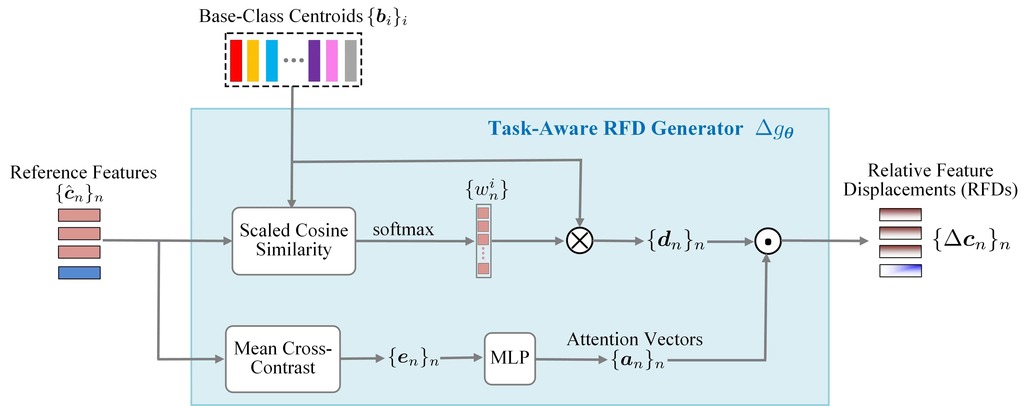Few-shot learning (FSL) usually assumes that the query is drawn from the same label space as the support set, while queries from unknown classes may emerge unexpectedly in many open-world application scenarios. Such an open-set issue will limit the practical deployment of FSL systems, which remains largely unexplored. In this paper, we investigate the problem of few-shot open-set recognition (FSOR) and propose a novel solution, called Relative Feature Displacement Network (RFDNet), which empowers FSL systems to reject queries from unknown classes while accurately classifying those from known classes. First, we suggest a different relative feature displacement learning (RFDL) paradigm for FSOR, i.e., meta-learning a feature displacement relative to a pretrained reference feature embedding, based on our insightful observations on the randomness drift issue of previous meta-learning based for FSOR methods, as well as the generalization ability of the feature embedding pretrained for general classification. Second, we design the RFDNet framework to implement the RFDL paradigm, which is mainly featured by a task-aware RFD generator and a marginal open-set loss. Comprehensive experiments on three public datasets, i.e., miniImageNet, CIFAR-FS and tieredImageNet, demonstrate that RFDNet can consistently outperform the state-of-the-art methods, achieving improvement of 5.2%, 2.0% and 1.7% respectively, %, with an improvement of %5.2, %2.0 and %1.7 respectively, in terms of AUROC for unknown-class rejection under the 5-way 5-shot setting.
If you find RFDNet useful in your research, please consider citing:
@article{deng2022rfdnet,
title={Learning relative feature displacement for few-shot open-set recognition},
author={Shule Deng, Jin-Gang Yu, Zihao Wu, Hongxia Gao, Yangsheng Li and Yang Yang},
journal={IEEE Transactions on Multimedia},
pages={1--12},
year={2022},
publisher={IEEE}
}
(1) Python 3.8.10
(2) Pytorch 1.8.1
(3) CUDA 11.2
- Prepare the pretrained network
download the pre-trained models from https://drive.google.com/drive/folders/16tQ8XnGO2OhpD2DPpchoJ916-Vs01gbn
- Prepare the feature extracted by the pre-trained network, which can improve the training speed
download the extracted feature from https://drive.google.com/drive/folders/1ofSOLxa5UgBWs_LME-hYTcFredg9-nuO?usp=sharing
- Set the config file
Complete the parameter settings for the config/dataset_name/resnet18.config as follow:
(1) Set the parameter "model-path" to the path of the downloaded pretrained model.
(2) Set the parameter "save-path" to the folder path where the downloaded extracted features are located.
- Training
python train.py -c /path/to/config/file/dataset_name.config
- Evaluation
python train.py -c /path/to/config/file/dataset_name.config --evaluate
You can also download datasets and pretrain the network on the base class by yourself.
- Mini-ImageNet
You can download the dataset from https://drive.google.com/file/d/1X7jZFU9S8YOeLC1YjELPM8AFYC6f-AYt/view?usp=sharing
- Tiered-ImageNet
You can download the dataset from https://drive.google.com/file/d/1yq8HZZyZ7atvINg0ix5S0uHm3wz9sU5Q/view?usp=sharing
- CIFAR-FS
You can download the dataset from https://drive.google.com/drive/folders/12RSelk-cW_nkOPkeux1TIcX53BBOfFyN?usp=sharing
If you have any question, please feel free to email us. (audsl@mail.scut.edu.cn)

